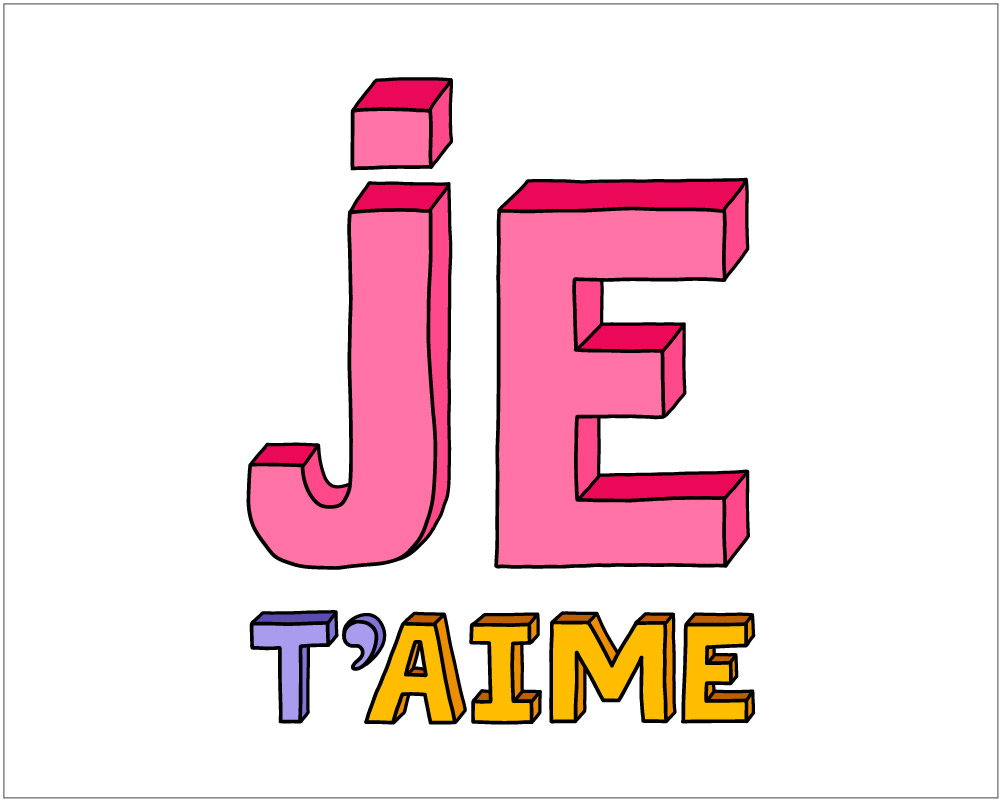Is French Really the Language of Love?
|
Font size:
For many, French is considered to be one of the most romantic languages in the world, where native speakers of La République converse in a beautiful, silky, and elegant language of love. But how much of this is actually true?
In this article, we’ll be taking a closer look at this common misconception, as we investigate whether the French, can legitimately lay claim to uttering the lingo of the lothario – or whether there are other more valid options in the world of romantic parlance.
The French Sex Appeal
What Makes French So Romantic?
1. Accent
There are as many as 28 different accents that can be found across the various regions of France, but the most commonly spoken and recognised accent is Parisian French. It is a language that, when uttered, can sound breathy and rather husky, which are two very appealing qualities in a voice. This breathy sound comes from the forming of sounds at the front of the speaker’s mouth, in combination with a frequency of vowels contained within the language. French has 13 oral vowels and four nasal vowels, plus three semivowels and three glides, making an overall total of 23. In contrast, American English has around 14 to 16. This means that, as a vowel-dominated language, French is inherently sexy and attractive in nature, due to the sheer number of oral vowels and the way they are expressed.
2. Pronunciation
French speakers generally have a softer tongue when pronouncing words. This differs from their English counterparts, who tend to over pronounce and add stress to certain words. In France, the language is much more rhythmic in nature, as they do not use stress or intonation on specific syllables. Words are continually stressed in the same way, with an emphasis being placed on the middle, rather than the end. This leads to sentences sounding more romantic, because when the stress is consistently in the same place – with pitch changes following similar patterns – a rhythm is established, giving the language a somewhat poetic feel.
3. Culture
As with any language, there is a strong cultural influence that contributes to the way that French is perceived among non-native speakers. Over history, its place in literature and film has come to be associated with love and romance, with such a view being cultivated over many hundreds of years. Popular culture can be a major driver when it comes to feeding into certain stereotypes about the French, with famous movies such as L’Atalante (1934), Girl on the Bridge (1999), Amelie (2001), and Amour (2012) reinforcing the commonly held view that France is a romantic place and that its citizens typically speak the language of love.
Other Languages of Love
● Spanish
While it is one of the world’s most widely spoken languages, Spanish is also a candidate for being the most romantic. Native speakers often express themselves in a passionate and emotive manner, while the softer consonants and longer vowels found in Spanish helps with the general flow of everyday speech. The Spanish language also requires verb conjugations, which means it’s easier to form rhymes, as there are many different sounds that can be used. This makes it a language that is well suited to both poetry and music.
● Italian
Italian speakers naturally use a rhythmic distribution of consonants and vowels, which lead to liling, rousing words that are easy to listen to – sometimes resembling a song. It is no surprise that many believe it to be a strong candidate in the battle to be the world’s most romantic language. Like French and Spanish, it evolved from Latin, and the history and culture of the Italian language combines with its easily recognisable rhythm to make it a lexicon of choice for the loving linguist. Moreover, Italian has an established history of beautifully written poetry, prose, and opera.
● Portuguese
Spoken in Portugal and Brazil, Portuguese also originates from Latin, and uses melodic and expressive intonations, along with long, drawn-out vowels. It is a language well suited to rhythmic and vocal music, as seen in a variety of musical genres, including marrabenta, samba, fado, and bossa nova. In Portuguese, there are many vowel sounds that require an unrestricted air flow, which makes it naturally suited to singing. Additionally, there are not many problematic consonants in the language, which have the potential to get in the way of expressive and vocal performances.














